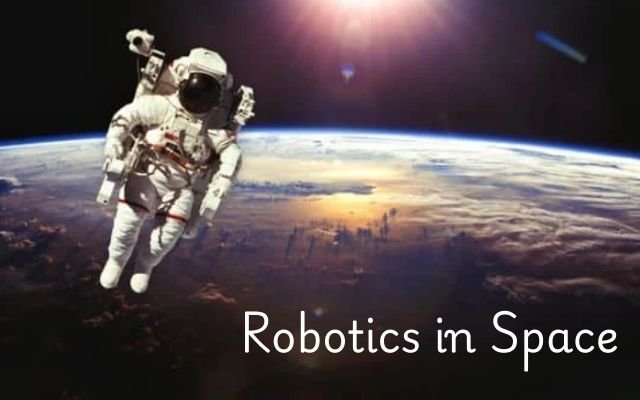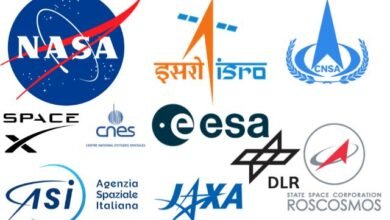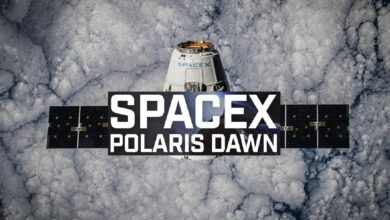Robotics in Space: The Essential Role of Thermal Control Systems in Ensuring Mission Success
Explore how thermal control systems are crucial for the success of robotics in space missions and maintaining equipment reliability.

Imagine what space travel will look like ten years from now. There could be space station orbiting the moon, people visiting lunar surface and NASA developing the first lunar outpost. This vision highlights growing role of robotics in space and emphasizes importance of thermal control systems in space exploration.
Returning to the moon means we’ll stay for a while but living there isn’t easy—who said it was? Astronauts will require significant infrastructure to survive on the lunar surface. They will need a pressurized habitat, power, food, and water supplies, along with storage for these essentials and waste.
Moreover, some parts of the base will be spread out due to the lunar environment. For instance, cargo landers and supplies can’t land right next to or on the base and the locations for mining ice and minerals are unlikely to be close to the base either.
How does this affect our lunar exploration?
Table of Contents
The Fragility of Humanity: Understanding Our Limits and Vulnerabilities
We need a safe way for people to work around a lunar base. Supplies and equipment must be moved between different areas of the base, and minerals and ice need to be drilled from craters and brought back for processing. Regular inspections of base’s exterior & maintenance of power systems will also be necessary.
While astronauts can handle some of this work, each time they go outside the lunar base, they put their lives at risk. A sharp rock could puncture their suits, extreme temperature changes in craters and on the surface could damage the suits, and, although rare, there’s a possibility of being hit by a micrometeorite.
In addition to safety concerns, astronauts have limited mobility in their space suits. For instance, Apollo astronauts had to hop around the lunar surface because their leg movement was restricted. If they dropped a tool, bending over to pick it up was difficult. Since a space suit is essentially a pressurized spacecraft designed to fit a human, these limitations make tasks like transportation, mining, and maintenance challenging.
To make work easier and safer for astronauts on a lunar base, we need robotics.
But what does it really take to get robotics into space? We’ve done it before but many people are unaware of complexities involved in making robotics work effectively in space environment.
Managing Heat: A Critical Challenge for Robotics in Space
Extreme Temperature Changes
The lunar surface experiences temperatures ranging from about -130 degrees Celsius to 120 degrees Celsius during its day and night cycle. Furthermore, a day spans 14 Earth days on the moon. This indicates that extended bouts of intense heat are followed by extended bouts of intense cold on the surface.
These temperature fluctuations can create several problems. For instance, as metals heat up and cool down, they expand and contract. The rover’s materials may be stressed by this repetitive cycle, which could result in problems including warping, cracking and delamination (the splitting of materials into thin layers). Critical components of the rover like as the chassis or suspension, may break if these problems are not resolved, making the rover inoperable.
Your phone may have shut down on you if it becomes too hot. This shields the internal electronics from harm. The rovers’ electronics are also susceptible to damage from intense heat which might render them unusable and endanger mission as a whole.
For rovers and robotics in space, selecting the appropriate materials and efficient temperature regulation is crucial.
Heat Generated by Electronics
Heat isn’t just an external issue. Inside the rover, the onboard computers and other electronics produce heat as they operate. Some tasks like navigating the lunar surface, put a heavy load on the processor.
Similar to how your computer heats up when you have many tabs and applications open, the rover’s computer can get very hot when it’s running. The problem is that there’s no air to cool it down; you can’t just attach a fan because there’s no air for it to move.
Electronics could melt from the heat produced during continuous use if not handled appropriately.
Ways to Manage Heat in Space
Heat isn’t just an external issue. Inside the rover, the onboard computers and other electronics produce heat as they operate. Some tasks like navigating the lunar surface, put a heavy load on the processor.
Similar to how your computer heats up when you have many tabs and applications open, the rover’s computer can get very hot when it’s running. The problem is that there’s no air to cool it down; you can’t just attach a fan because there’s no air for it to move.
Electronics could melt from the heat produced during continuous use if not handled appropriately.
Radiators
The white panels on the International Space Station (ISS) are radiators made of aluminum. These radiators help manage heat by using thermal conductivity. All objects release low-energy photons, or infrared radiation, and the heat from the radiators is naturally converted into this form of radiation and released into space.
Heat Transfer Solutions
Heat needs to be directed from hot spots such as CPUs, to the heat sink or radiators in order to control excessive temperatures. Steel, copper, and other thermally conductive materials can be used for this.
A heat pipe which is made up of a metal shell, a porous inner lining and a highly pressurized fluid, is the most often used technique for this. Fluid vaporizes & travels to the pipe’s cooler end where it condenses & releases heat, when heat is applied to one side of it. By doing this, heat can be efficiently moved from one end of pipe to other, keeping interior temperature constant.
Active Thermal Control Systems
While we’ve discussed passive systems that don’t need extra power, active systems are simpler. Heaters are used to warm up components when needed. For example, small heaters are often placed on batteries to keep them within their operating temperature.
Cryocoolers are designed to cool components below 100K, but they are not typically needed in space because radiators can perform the same function. Cryocoolers are relatively new and haven’t been widely used yet.
Fluid-Based Heat Management
Pumped fluid loops (PFLs) also use fluid to transfer heat, similar to heat pipes. Heat is transferred from one location to another by pumping a fluid via metal pipes. Larger spacecraft like International Space Station (ISS), may have heat pipes that are too small to control heat across the entire vehicle, making this technology more effective.
Utilizing Phase Change Materials (PCMs)
The temperature of the lunar surface varies dramatically during the day and night. Thermal control would be made easier if we could store cold during the night and heat during the day. Phase change materials, or PCMs, are useful in this situation.
During transitions in phase, PCMs absorb or release energy which is helpful for heating or cooling. For example when water is heated, it increases sensibly up to 0 degrees Celsius when it begins to dissolve. It does not get warmer throughout this process; instead, it gains latent heat. When the temperature drops, water produces heat that is sensible until it freezes once more.
For a material to be effective as a PCM, it needs high latent heat capacity, meaning it can store a lot of energy without changing temperature. Water can absorb large amounts of energy due to its latent heat capacity which is around 334 J/g.
Practically speaking, because PCMs store a significant quantity of heat, they may easily and rapidly change temperature. Although paraffin wax is widely used, research suggests that water might be an acceptable substitute.
A PCM may release heat generated by electronics at night and absorb it during day to maintain constant temperature for a lunar rover. This is frequently used in conjunction with a heater because PCMs may not be sufficient to control temperature variations on their own.
Improved PCMs that can independently withstand the moon night may result from future developments in material science. By enabling more equipment or increasing energy efficiency, such materials could improve lunar robotics & eliminate need for extra heaters.
- 10 Top Space Agencies Shaping Our Universe
- St Jude Polaris Dawn Mission Delayed Again: 3 Major Setbacks by SpaceX
- Lunar Reconnaissance Orbiter Unveils 5 Moon Mysteries
Conclusion
- Space has extreme temperature changes that can damage equipment.
- Spacecraft and rovers need thermal control to work well.
- Thermal control means moving, releasing, and storing heat.
- Radiators help release heat from spacecraft.
- Heat pipes and fluid loops transfer heat around a spacecraft.
- Heaters and cryocoolers actively manage temperatures.
- Any heat that isn’t released stays on the spacecraft.
- Phase change materials store and release heat when needed.
As we return to the moon, our robots must handle heat effectively. Right now, our technology can’t last through the whole lunar night. Improving thermal control could let future rovers work all the time, not just during the day.
This would make lunar bases more efficient, save astronauts time, and keep them safe by reducing nighttime excursions.
Improving robotics technology is key for successful space exploration and missions like Artemis.



